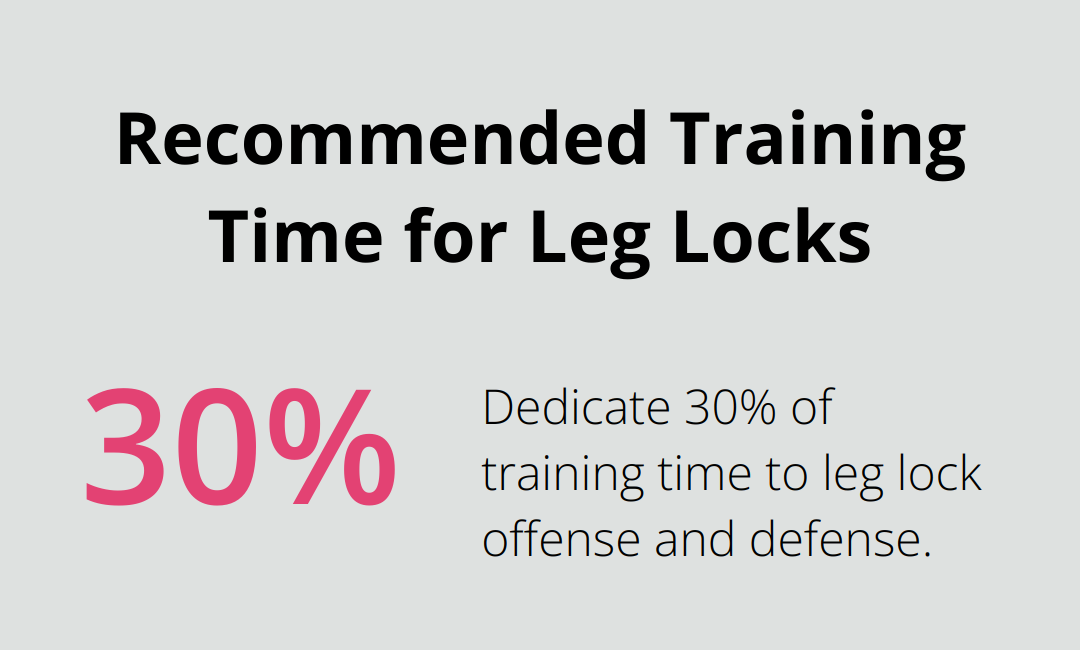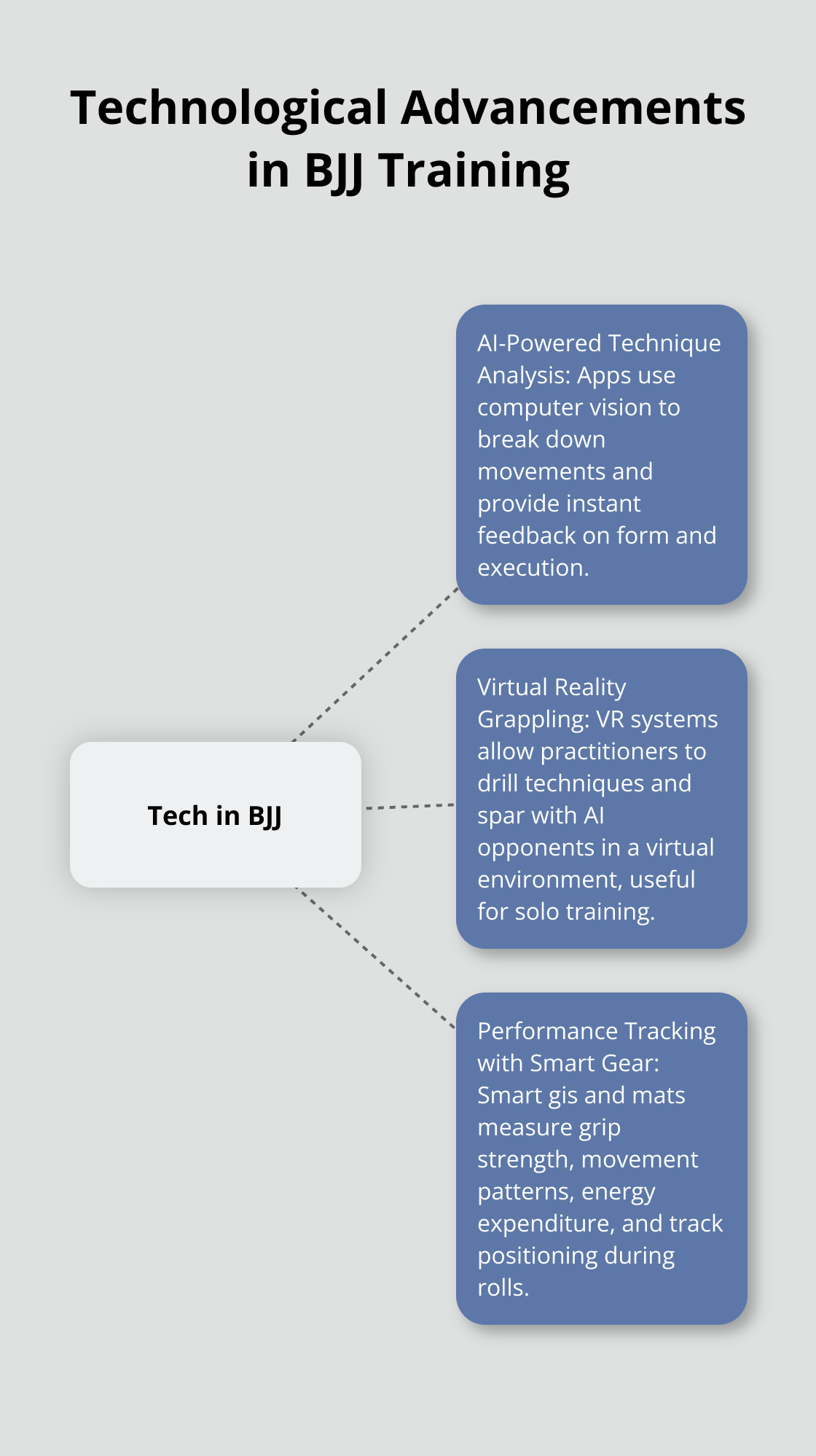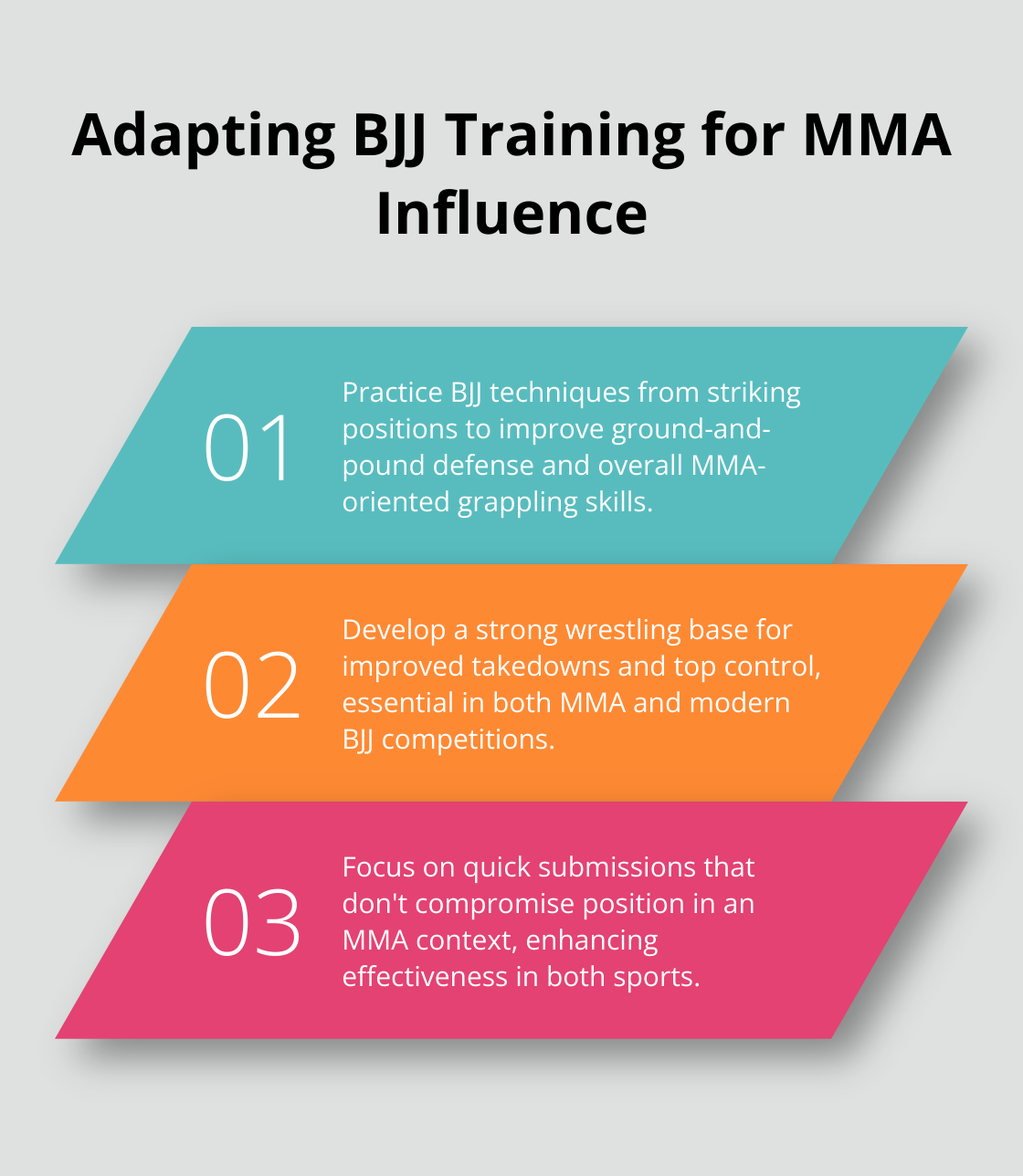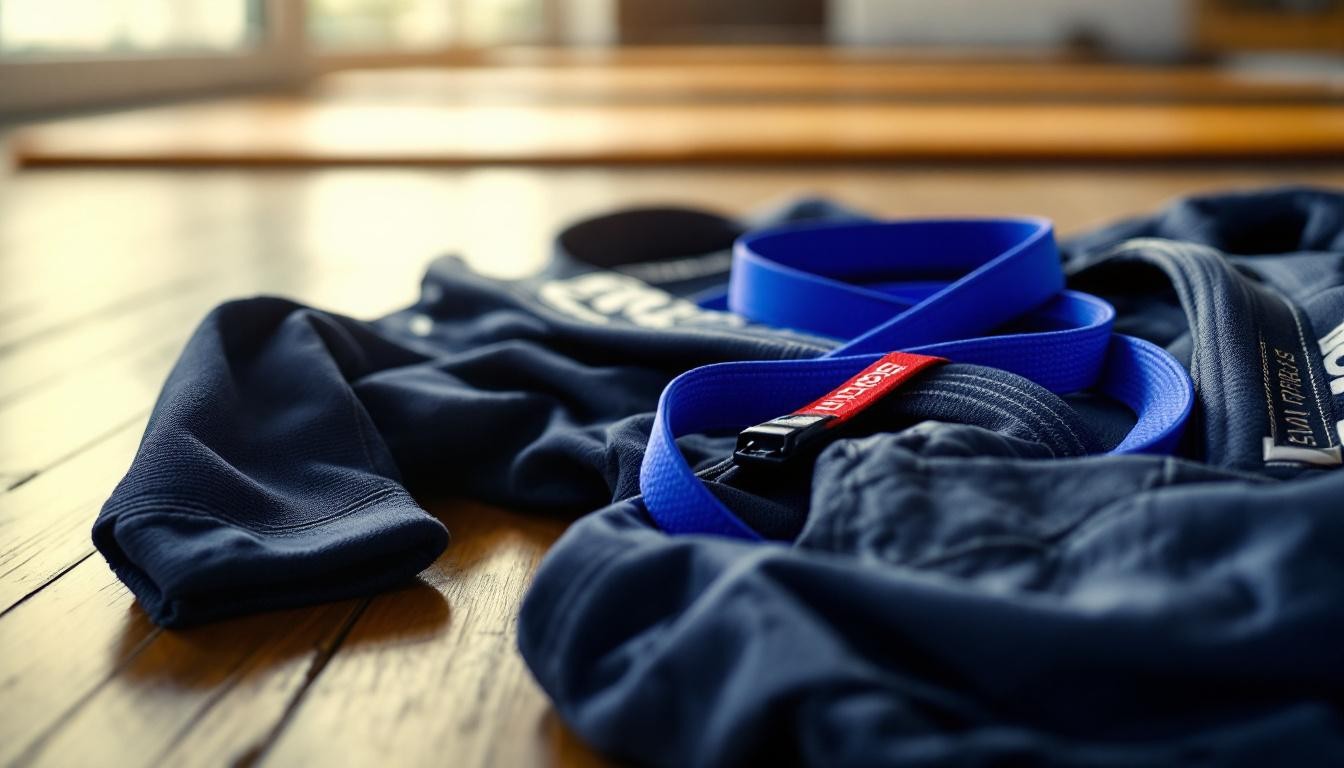At Jiu Jitsu, we’re excited to explore the cutting-edge developments shaping our beloved martial art. Brazilian Jiu-Jitsu is evolving rapidly, with new techniques, training methods, and competition formats emerging constantly.
From the rise of New Wave Jiu-Jitsu to technological breakthroughs in training, the BJJ landscape is more dynamic than ever. In this post, we’ll dive into the latest trends and innovations that are transforming the way we practice and compete in BJJ.
How Are BJJ Techniques Evolving?
At Souza Grappling Co., we observe significant shifts in BJJ techniques over recent years. The sport continues to evolve, with practitioners who push the boundaries of mat performance. Let’s explore some of the most impactful changes we’ve witnessed.
The Leg Lock Revolution
Leg locks have become a dominant force in modern BJJ. Once considered a niche technique, they now form a fundamental part of any well-rounded grappler’s arsenal. The Danaher Death Squad, led by John Danaher, spearheads this revolution. Their systematic approach to leg locks has changed the game, forcing practitioners to adapt or risk obsolescence.
To stay competitive, we suggest dedicating at least 30% of your training time to leg lock offense and defense. Focus on understanding the mechanics of heel hooks, knee bars, and ankle locks. Leg entanglements offer more than just submissions – they provide opportunities for sweeps and positional control.

Inverting the Game
The berimbolo and other inverted guard techniques have gained massive popularity, especially in sport BJJ. These techniques allow smaller practitioners to level the playing field against larger opponents by using leverage and momentum to their advantage.
To incorporate these techniques into your game, start by improving your hip mobility and core strength. Spend time drilling inversions from various positions, with a focus on maintaining control and balance. A study by the International Journal of Performance Analysis in Sport found that successful berimbolo attempts increased by 47% in high-level competitions between 2015 and 2020.
Grappling Fusion
We notice a growing trend of BJJ practitioners who incorporate techniques from wrestling and judo into their game. This fusion of grappling styles creates a more well-rounded and dynamic approach to BJJ.
At Souza Grappling Co., we encourage our students to cross-train in wrestling and judo when possible. Even if full cross-training isn’t feasible, incorporating specific techniques can prove beneficial. For example, adding a weekly drilling session focused on wrestling-style takedowns or judo throws can significantly improve your stand-up game.
The IBJJF reported a 35% increase in matches ending with takedowns in their 2024 World Championships (compared to 2020), highlighting the growing importance of these skills in competition.
As BJJ continues to evolve, it’s important to maintain an open mind and adaptability. While mastering the fundamentals remains crucial, don’t hesitate to experiment with new techniques and approaches. The future of BJJ belongs to those willing to push boundaries and innovate.
Now, let’s turn our attention to how technology is reshaping the way we train and improve our BJJ skills.
How Technology Transforms BJJ Training
At Souza Grappling Co., we observe a technological revolution in BJJ training. These advancements reshape how practitioners learn, analyze, and improve their techniques.

AI-Powered Technique Analysis
AI-driven apps revolutionize technique analysis in BJJ. The BJJ Scout app uses computer vision to break down movements, providing instant feedback on form and execution. Our classes show improvement in technique retention when students use these apps alongside traditional training.
To maximize the benefits of AI analysis:
- Record your sparring sessions regularly
- Use the app to analyze your most common techniques
- Focus on correcting the top issues identified by the AI
Virtual Reality Grappling
Virtual Reality (VR) creates new possibilities for BJJ training. VR systems allow practitioners to drill techniques and spar with AI opponents in a virtual environment. This technology proves particularly useful for solo training or when physical partners are unavailable.
We recommend you incorporate VR training into your routine:
- Use it for 30 minutes, 2-3 times a week
- Focus on drilling specific techniques you struggle with
- Gradually increase the difficulty of AI opponents
Performance Tracking with Smart Gear
Smart gis and mats transform how we track performance in BJJ. Smart gis feature sensors that measure grip strength, movement patterns, and energy expenditure. Similarly, smart mats track positioning and submission attempts during rolls.
To leverage this technology effectively:
- Set specific performance goals (e.g., improving guard retention time)
- Review your data after each training session
- Adjust your training focus based on the insights gained
These technological advancements complement traditional BJJ training. You can accelerate your learning, refine your techniques, and gain valuable insights into your performance by embracing these tools.
As we explore the impact of technology on BJJ training, it’s important to consider how changes in competition rules also shape the sport. Let’s examine the evolving landscape of BJJ competitions and their influence on training strategies.
How Competition Rules Reshape BJJ
Competition rules in Brazilian Jiu-Jitsu (BJJ) continue to evolve, significantly impacting training strategies and match dynamics. These changes force practitioners to adapt their approaches to training and competition preparation.
IBJJF Rule Modifications and Strategic Shifts
The International Brazilian Jiu-Jitsu Federation (IBJJF) has implemented several rule changes in recent years. A notable modification includes the BJJ weight classes that ensure fair competition by matching athletes of similar size.
To adapt to these rule changes, practitioners should dedicate a portion of their training time to understanding and preparing for their specific weight class requirements.
The Emergence of Submission-Only Formats
Submission-only tournaments have gained significant traction in the BJJ community. Events like the Eddie Bravo Invitational (EBI) and Polaris have popularized this format, which eliminates points and advantages, focusing solely on submissions to determine the winner.
To excel in submission-only competitions, practitioners should:
- Develop a diverse submission arsenal
- Improve defensive skills to withstand prolonged submission attempts
- Enhance cardio to maintain intensity throughout extended matches
MMA’s Influence on BJJ Competition
The growing popularity of Mixed Martial Arts (MMA) has significantly influenced BJJ competition styles. A trend towards more aggressive, top-heavy games that emphasize ground-and-pound defense and quick submissions has emerged.
To stay ahead of this trend, BJJ practitioners should incorporate these elements into their training:

The Impact on Training Methodologies
These rule changes and format evolutions have prompted BJJ academies to adjust their training methodologies. Many schools now offer specialized classes that focus on competition-specific strategies and techniques.
Adapting to the New Landscape
As the competitive landscape of BJJ continues to evolve, practitioners must stay informed about rule changes and emerging trends. Attending seminars, participating in various tournament formats, and cross-training in complementary disciplines (such as wrestling or judo) can help grapplers adapt to the changing face of BJJ competition.
Final Thoughts
Brazilian Jiu-Jitsu continues to evolve rapidly, with New Wave Jiu-Jitsu at the forefront of innovation. Techniques like leg locks and inverted guards reshape competitive landscapes, while technology revolutionizes training methods. AI-powered apps, VR simulations, and smart gear provide unprecedented insights, accelerating skill development for practitioners.
Competition rules drive strategic adaptations, prompting practitioners to develop well-rounded skill sets. The fusion of different grappling styles leads to new hybrid techniques, enhancing the sport’s dynamism. These changes underscore the importance of adaptability and continuous learning in BJJ.
Souza Grappling Co. remains committed to staying ahead of these developments (offering state-of-the-art facilities and expert instruction). We provide an ideal environment for growth, whether you’re a beginner or an experienced grappler looking to refine your skills. The future of BJJ holds exciting possibilities for those who embrace innovation and commit to ongoing improvement.




